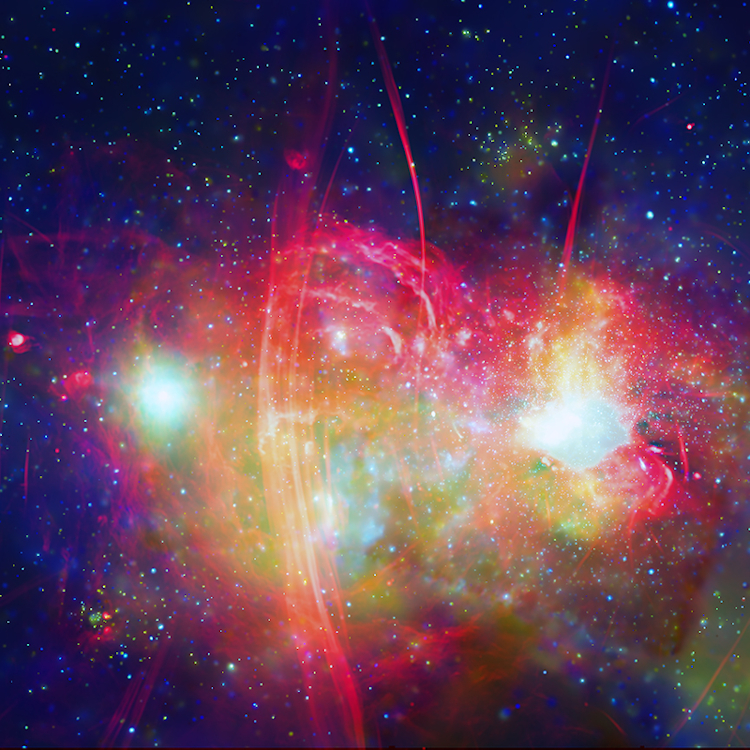
 Credit: X-Ray: NASA/CXC/UMass/D. Wang et al.; Radio: SARAO/MeerKAT)
Credit: X-Ray: NASA/CXC/UMass/D. Wang et al.; Radio: SARAO/MeerKAT)
Can the Center Hold?
The centers of spiral galaxies are mysterious regions, and the center of our own Milky Way is no exception. Spiral galaxies like the Milky Way have a flat extended disk of stars typically a few hundred thousand light years in diameter, and a bulge at the center of the disk. This shape is produced by the balanced interplay of the galaxy's rotation and its gravity, produced by the (light and dark) matter holding it together (along with important contributions from random collisions with other galaxies). Studying the center of the Milky Way using ground-based optical telescopes is difficult, since the center of the Galaxy is hidden behind enormously thick clouds of dust and gas which lie between the earth and the center, some 25,000 light years away. But very long wavelength radiation (like radio waves) and very short wavelength radiation (like X-rays) can penetrate this dust shroud to reveal the wonders deep in the heart of the Galaxy. The image above is a composite X-ray observation (from the Chandra X-ray Observatory, in green and blue) and a radio image (from the MeerKAT telescope in South Africa, in red). The X-ray image is a record of high energy events which have occurred near the center of the Galaxy, powered by black holes, neutron stars, supernovae and other stellar explosions. The radio emission is produced by cooler gas held in the thrall of the ornate, structured, mysterious magnetic field that threads the center and the Milky Way itself. Shown in the image is Sgr A*, a surprisingly bright 4-million solar mass monster black hole, which is sleeping at the moment. Best not disturb it.
Published: January 4, 2021
<
HEA Dictionary ● Archive
● Search HEAPOW
● Other Languages
● HEAPOW on Facebook
● Download all Images
● Education ● HEAD
>

Each week the HEASARC
brings you new, exciting and beautiful images from X-ray and Gamma ray
astronomy. Check back each week and be sure to check out the HEAPOW archive!
Page Author: Dr. Michael F. Corcoran
Last modified Tuesday, 27-Feb-2024 10:06:39 EST


